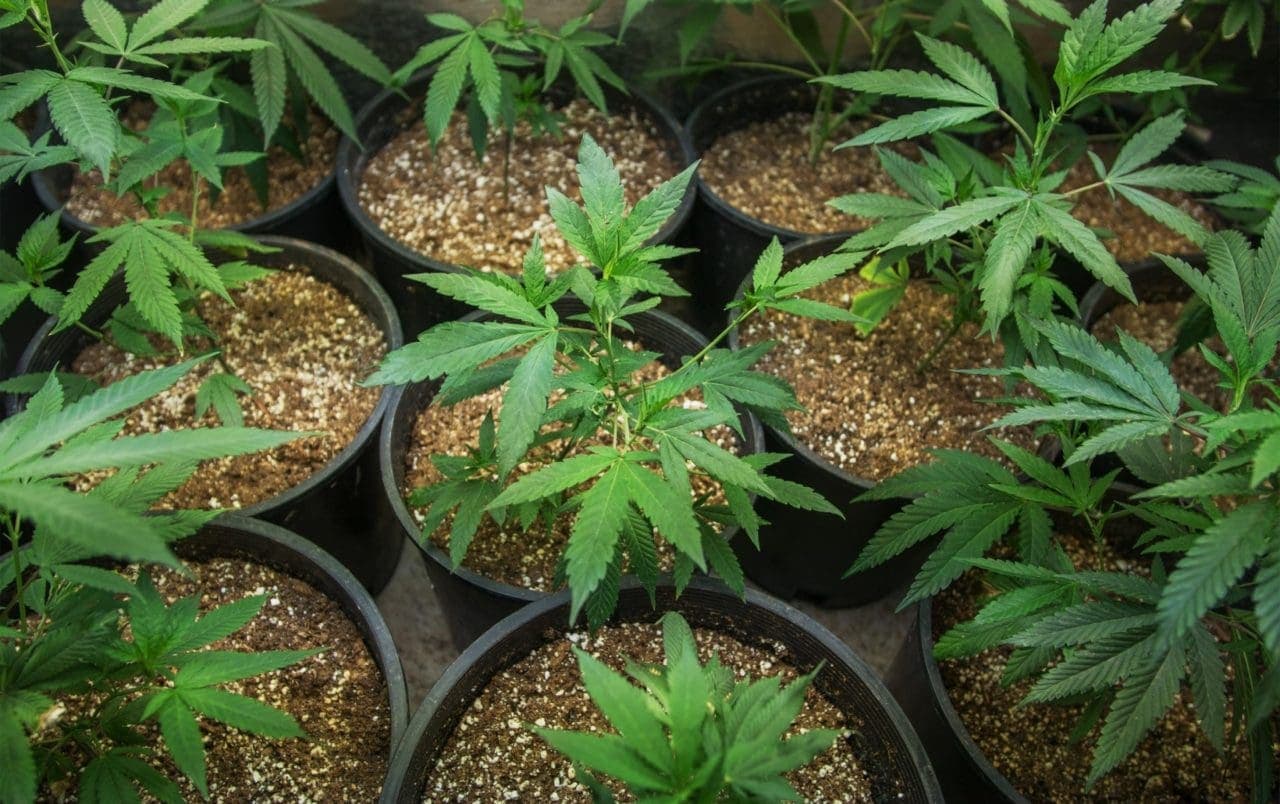How to Move Your Outdoor Cannabis Plants Indoors

Article written by

Dipak HemrajMedical Cannabis Researcher
Content reviewed by

Dr. Gavin MorelandMedical Director
We all know weather is unpredictable but some times of year are more reliable for outdoor cannabis grows, such as summertime in the northern hemisphere. As fall approaches and the weather begins to change, however, it may be necessary to move outdoor grows inside to protect them from the colder climate.
When growing cannabis, it’s generally best to stick to the medium you’re already growing with, as moving a plant from outdoors to indoors (or vice-versa) can stress the plant out. This stress is referred to as “plant shock”, which occurs when there is a sudden change in the environment, such as light levels, temperature changes, water stress or fertilizer changes. Transplant shock may also occur if you are moving your plant from one pot to another. The shock can result in fragile, delicate plants that can easily break apart, display stunted growth, and become more prone to contracting pests or diseases.
However, being able to move plants from the outside to the inside is sometimes necessary, such as when:
- There’s been a sudden change in the temperature outdoors, i.e. it’s too hot or too cold for the plant to be outdoors. That is, it’s often below 16℃ (60℉) at night or above 28℃ (82.5℉) during the day.
- Wind and/or rainfall has suddenly become excessive.
- There has been flooding in the area.
- You have had an unusually short growing season.
So, here’s how to move your plants outdoors-to-in with as little stress as to you and your plant as possible.
Get your medical marijuana card
Acclimatise Your Cannabis Plant
“Acclimatise” essentially means to get your plant used to and adapted to its new environment. To do this effectively, you should “train” your plant over the course of around 2 weeks. Wherever possible, you should bring your plants indoors at night, and put the plant back outside for the daytime, slowly increasing the amount of time the plant spends indoors. Then, once the 2 weeks are over, your plant should be ready to spend its time indoors full-time.
The ideal time to bring in a plant from the outdoors is when temperatures are generally quite similar indoors and outdoors, meaning that the shock won’t be as pronounced. Planning ahead is key here: don’t wait until it’s already too cold for them outside. Be proactive.
Check Your Cannabis Plant For Pests
Before bringing your outdoor plants in, it is worthwhile checking for pests. The outdoors can provide some pest protection due to natural predators. Indoors, these pests can run rampant, and destroy any other crops you might have indoors as well. Treating the plant with neem oil can help beat most pests, and you can even hose down the plant with water (and even adding a small amount of appropriate soap, e.g. Dr Bronner Castile Liquid Soap – about 1 tablespoon per gallon of water) before moving your plant indoors to ensure there aren’t any pests.
Repotting or Pruning Your Cannabis Plant
Most people tend to keep their cannabis plants outdoors over the spring and summer seasons, so if you are bringing in your plant from the outside, you will need to repot and/or prune the plant in order to manage its growth. When repotting, put your plant into a slightly larger new container – about 2 to 3 inches bigger than your previous pot.
You can also prune your plant, so that any new leaves will get used to the indoors. You should not prune more than one-third of the plant, otherwise this can also shock the plant and prevent growth. You may also need to prune the plant’s roots in order to encourage growth. You should prune only thread roots (small roots that grow off the main tap roots), and once again only up to a third of thread roots in order to prevent shock.
Choosing the Right Cannabis Variety
Sadly, not all types of cannabis are easily transferable from the outdoors to the indoors. You will want a hardy variety that has been bred for both indoor and outdoor growth, and one that can withstand sudden changes in temperature, humidity and light. A few examples of such cannabis varieties include:
What About Emergencies?
The fact is, you cannot always predict when you might need to bring a plant indoors. Sometimes, the weather can change suddenly, and you need to bring the plant in. In such instances, you will need to speed up the acclimatisation process. You can do this by trying to keep the same levels of light and humidity indoors as there is out, but this can be difficult. The best thing to have in such a situation is a hardy plant that’s used to growing both indoors and outdoors (such as the ones mentioned above). You can also try using the outdoor plant as a mother, and take cuttings from it for indoor growth. Check out our post on growing for beginners to learn about keeping mothers and clones.
Transferring Cannabis From Outdoors to In: Is It Worth It?
Even though it’s ideal to keep outdoor plants outside and indoor plants inside, it can certainly be worth making the transfer. You can take advantage of the (free) natural sun when the plant is outdoors, and take advantage of the stable environment indoors, and you can potentially get very large yields of good quality buds by making a successful transfer. So yes, it is definitely worth it if you have to make the transfer, and by doing so you can increase your growing skills as well.